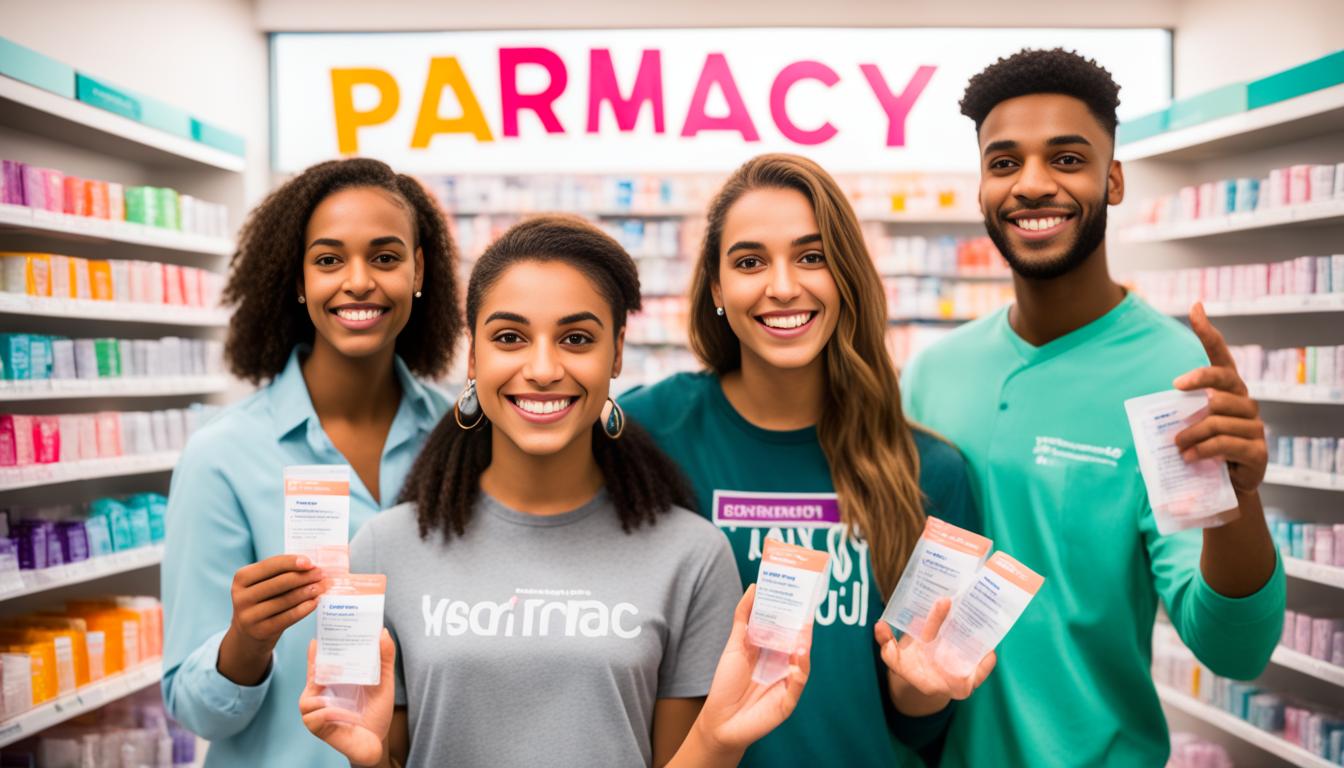Can Teens Buy Condoms? Essential Info for Youth
Are you a teenager wondering if you can buy condoms? The answer is yes! Teens can legally purchase condoms at any age, ensuring access to essential sexual health resources. It’s important for young people to have the information and tools they need to engage in safe and responsible sexual behavior. Let’s explore where teens can buy condoms, tips for purchasing them, and other contraception options available.
Key Takeaways:
- Teens can legally purchase condoms at any age.
- Condoms are available for purchase at drugstores, community health centers, supermarkets, convenience stores, and online.
- Teens can also obtain free or reduced-cost condoms from contraception and health clinics, doctors, and college/university health offices.
- Buying condoms online can be a convenient and discreet option for teens.
- Aside from condoms, there are other contraception options available for teenagers.
Where Can Teens Buy Condoms?
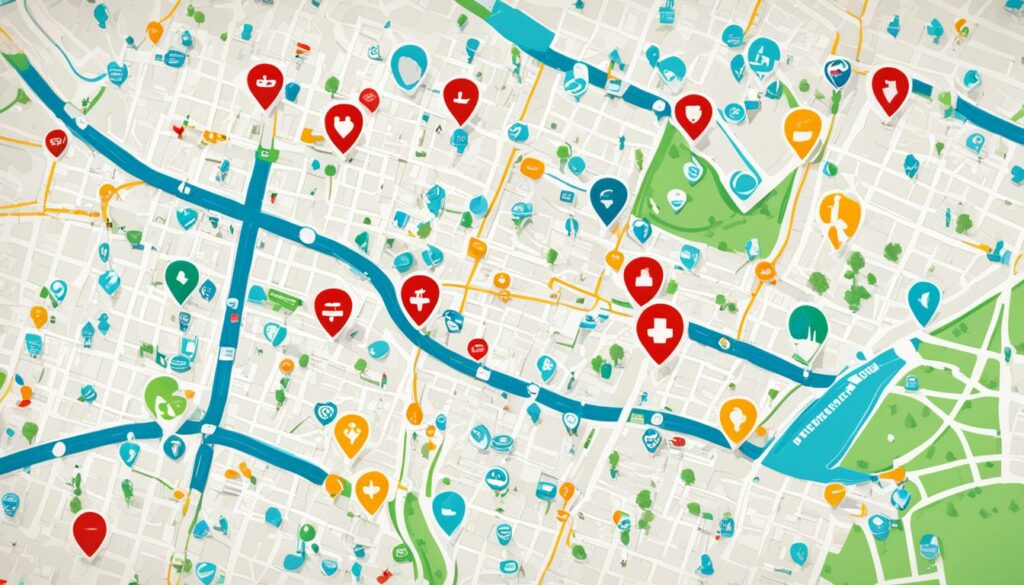
When it comes to buying condoms, teens have several options available to them. It’s important for teenagers to know where they can conveniently and discreetly purchase condoms to ensure safe and responsible sexual behavior.
Where can you buy condoms as a teen?
- Drugstores: Many drugstores, such as CVS, Walgreens, and Rite Aid, have a wide selection of condoms. They are often located in the family planning aisle.
- Community Health Centers: Local community health centers may provide condoms at low or no cost. These centers prioritize the health and well-being of young people.
- Supermarkets: Some supermarkets, like Walmart, Target, and Kroger, carry condoms in their personal care aisles.
- Convenience Stores: Teenagers can also find condoms at convenience stores, such as 7-Eleven or Circle K.
- Online: Buying condoms online can be a discreet option for teens. Websites like Amazon, Condom Depot, and RipNRoll offer a wide variety of brands and options.
- College Campuses: Some college campuses have vending machines that dispense condoms. These machines can often be found in dorms, student health centers, or designated areas on campus.
Condoms are typically sold in packages of three or more, with prices ranging from $2 to $6, depending on the brand and type. It’s important for teens to remember that purchasing condoms is a responsible decision and a normal part of taking care of their sexual health.
Tips for Buying Condoms

Buying condoms can sometimes feel uncomfortable for teens. It’s normal to have concerns or feel self-conscious about the process. To make buying condoms easier, teens can follow some helpful tips:
- Buy condoms before you need them: It’s always a good idea to have condoms on hand, even if you’re not planning to have sex right away. Being prepared ensures that you won’t be caught off guard and can prioritize your sexual health.
- Check the expiration dates: Condoms have expiration dates, so make sure to check the packaging for this information. Using expired condoms may reduce their effectiveness, so it’s important to choose ones that are within their recommended timeframe.
- Know your size and materials: Condoms come in different sizes and materials (such as latex, polyurethane, or lambskin). Knowing your preferences can help you select the right condom for comfort and pleasure.
- Be aware of latex allergies: If you or your partner has a latex allergy, it’s important to choose condoms that are latex-free. Look for alternatives such as polyurethane or polyisoprene condoms.
- Understand that buying condoms is responsible and normal: Remember, buying condoms is a responsible action that shows maturity and concern for your sexual health. It’s a normal part of taking care of yourself and your partner.
By following these tips, teens can navigate the process of purchasing condoms with confidence and ensure they are taking proactive steps towards their sexual well-being.
Can Teens Get Condoms for Free?
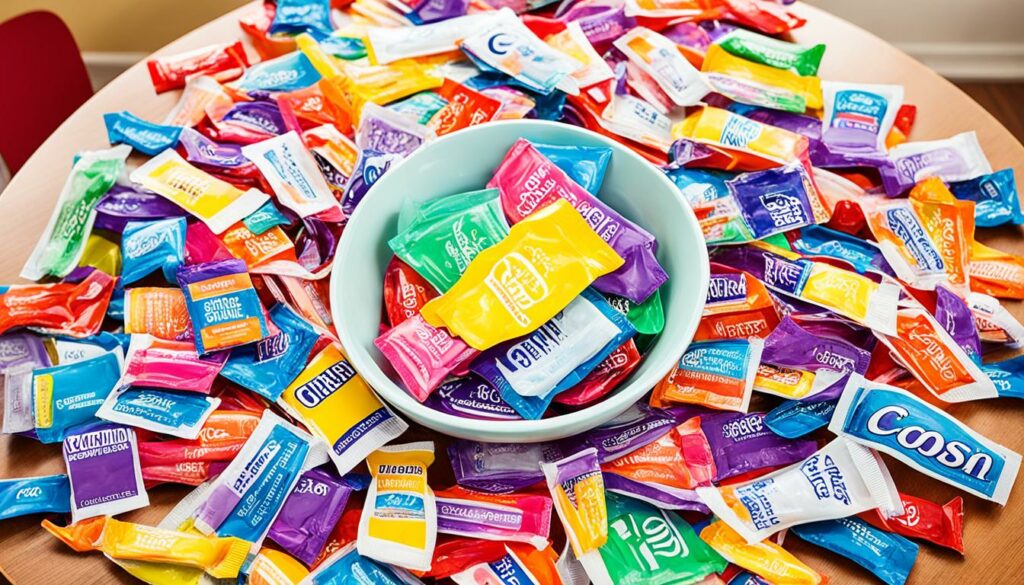
Teenagers should not let the cost of condoms deter them from using protection. Access to free or low-cost condoms is available through various sources, ensuring that teenagers have options regardless of their financial situation.
Contraception and health clinics, doctors, and college/university health offices are valuable resources where teens can obtain free or reduced-cost condoms. These institutions prioritize the sexual health of teenagers and aim to make condoms accessible and affordable. Additionally, online platforms like condomfinder.org assist teens in locating the nearest locations offering free or reduced-cost condoms.
It’s important for teenagers to know that they have choices when it comes to accessing condoms. Free condoms for teens enable them to prioritize their sexual health, regardless of their ability to purchase them.
“Access to free condoms allows teenagers to prioritize their sexual health and protect themselves from potential risks.”
Can Teens Buy Condoms Online?
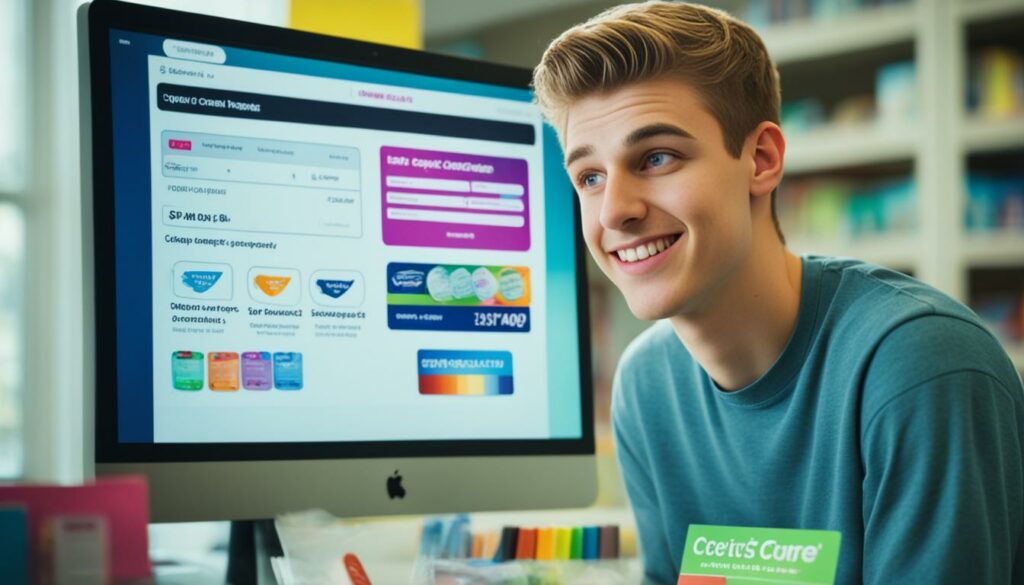
For some teens, buying condoms online can be a more convenient and discreet option. There are several reputable websites where teens can purchase condoms at a reduced price and have them delivered in a discreet package. Websites like Amazon, Condom Depot, and RipNRoll are popular choices. It’s important for teens to have access to a credit card or PayPal account to make online purchases.
Buying condoms online provides a range of benefits for teens. Apart from the convenience of ordering from the comfort of their own home, online shopping allows for discreet packaging and delivery. This ensures that teens can maintain their privacy and avoid any potential embarrassment.
Furthermore, purchasing condoms online often offers a wider selection of brands and styles compared to physical stores. This allows teens to find condoms that fit their personal preferences and ensure optimal comfort during sexual activity.
Benefits of Buying Condoms Online:
- Convenience of ordering from home
- Discreet packaging and delivery
- Wide selection of brands and styles
- Access to customer reviews and recommendations
- Possibility of finding better deals and discounts
“Buying condoms online not only offers convenience, but also allows teens to maintain their privacy and access a wider range of options.” – Dr. Sarah Thompson, Adolescent Health Specialist
With the accessibility of online platforms, it has become easier than ever for teens to purchase condoms discreetly and responsibly. However, it’s essential for teens to ensure they are buying from reputable websites to guarantee the authenticity and quality of the products.
| Website | Features | Price Range |
|---|---|---|
| Amazon | Wide selection, customer reviews | $2 – $15 |
| Condom Depot | Discreet packaging, bulk options | $5 – $20 |
| RipNRoll | Discreet packaging, variety packs | $3 – $25 |
When making purchases online, teens should also ensure they are using a secure payment method and taking necessary precautions to protect their personal information. Parents or trusted adults can play a vital role in guiding teens through the process and ensuring safe online transactions.
How Many Condoms Do Teens Need?

When it comes to stocking up on condoms, it’s important for teens to be prepared for their sexual experiences. So, how many condoms do teens need? The general recommendation is to have at least three to six condoms on hand for each sexual encounter. This takes into account various factors, such as the possibility of multiple rounds of sex, accidental mishaps (like putting a condom on upside down), or the need for extras.
Using a new condom every time they have sex is essential for teens to prioritize their sexual health and protection. It’s also recommended to change condoms after 30 minutes of intercourse to minimize the risk of breakage. Teens should be aware of any signs of damage or defects in the condom and always opt for a new one if necessary. Having spare condoms is also a wise idea in case of breakage or defects during sexual activity.
Remember, using condoms consistently and correctly is key to prevent both unintended pregnancies and sexually transmitted infections (STIs). By having an ample supply of condoms, teens can feel more confident and in control of their sexual health.
Keeping It Safe: Tips for Proper Condom Use
Using condoms correctly is as important as having an adequate supply. Here are some key tips for teens to ensure they are using condoms effectively:
- Check the expiration date: Always make sure the condoms are not expired before using them.
- Store condoms properly: Keep condoms away from extreme temperatures and direct sunlight.
- Use the right size: Condoms come in different sizes, so it’s essential to find the right fit for maximum effectiveness.
- Handle condoms carefully: Open the package carefully to avoid tearing or damaging the condom inside.
- Put it on correctly: Make sure to place the condom on the erect penis before any genital contact and unroll it all the way to the base.
- Use plenty of lubrication: Adding a water-based lubricant can enhance comfort and prevent condom breakage.
- Hold onto the base: When withdrawing the penis after intercourse, hold onto the base of the condom to prevent it from slipping off.
- Dispose of properly: After use, wrap the used condom in tissue or toilet paper and throw it in the trash. Do not flush it down the toilet.
Remember, accessing proper sexual health education and resources is crucial for teens to make informed choices and protect themselves. Talk to a healthcare professional or seek guidance from trusted sources to ensure you have all the information you need about condom use and sexual health.
What Other Contraception Options Are Available for Teens?

While condoms are an effective form of contraception, there are several other options available for teens to explore. It’s important for sexually active teens to consult with a healthcare professional, such as a gynecologist or urologist, to discuss and determine the most suitable contraception method for their individual needs.
1. Contraceptive Sponges:
Contraceptive sponges are soft, flexible foam devices that contain a spermicide. They are inserted into the vagina before intercourse and provide a barrier that prevents sperm from reaching the cervix. However, they do not protect against sexually transmitted infections (STIs).
2. Diaphragms or Cervical Caps:
Diaphragms and cervical caps are barrier methods that are inserted into the vagina to cover the cervix and prevent sperm from entering the uterus. They must be used with spermicide and fitted by a healthcare professional.
3. Female (Internal) Condoms:
Female condoms, also known as internal condoms, are inserted into the vagina before intercourse. They provide a physical barrier that prevents sperm from entering the cervix. Female condoms also help protect against STIs.
4. Fertility Awareness-Based Contraception:
Fertility awareness-based contraception involves tracking and monitoring a person’s menstrual cycle to determine the fertile period. During this time, alternative contraceptive methods such as barrier methods or abstinence are used to prevent pregnancy.
5. Spermicides:
Spermicides are chemicals that are designed to kill sperm. They are available in various forms, including creams, gels, foams, suppositories, and films. Spermicides are often used in combination with barrier methods.
6. Prescription-Based Methods:
Teens can also explore prescription-based methods, which require a healthcare professional’s guidance and prescription. These options include:
- Birth control pills – Oral contraceptives that contain hormones to prevent ovulation and thicken cervical mucus.
- IUDs (intrauterine devices) – Small T-shaped devices that are inserted into the uterus and offer long-term contraception.
- Hormonal implants – Small rods placed under the skin that release hormones to prevent pregnancy.
- Injections – Hormonal injections administered every few months to prevent pregnancy.
- Patches – Adhesive patches that release hormones through the skin to prevent pregnancy.
It is important for teens to discuss these options with a healthcare professional who can provide comprehensive information, address questions or concerns, and guide them towards the most suitable contraception method for their needs and lifestyle.
| Contraception Method | Effectiveness | Protection against STIs |
|---|---|---|
| Condoms | High | Yes |
| Contraceptive sponges | Moderate | No |
| Diaphragms or Cervical Caps | Moderate | No |
| Female (Internal) Condoms | High | Yes |
| Fertility Awareness-Based Contraception | Moderate | No |
| Spermicides | Low | No |
| Birth Control Pills | High | No |
| IUDs | High | No |
| Hormonal Implants | High | No |
| Injections | High | No |
| Patches | High | No |
It’s essential for teens to understand the benefits, potential side effects, and proper usage of any chosen contraception method to ensure effective protection against unintended pregnancies and sexually transmitted infections.
The Importance of Youth Health Equity + Safety Act (YHES Act)
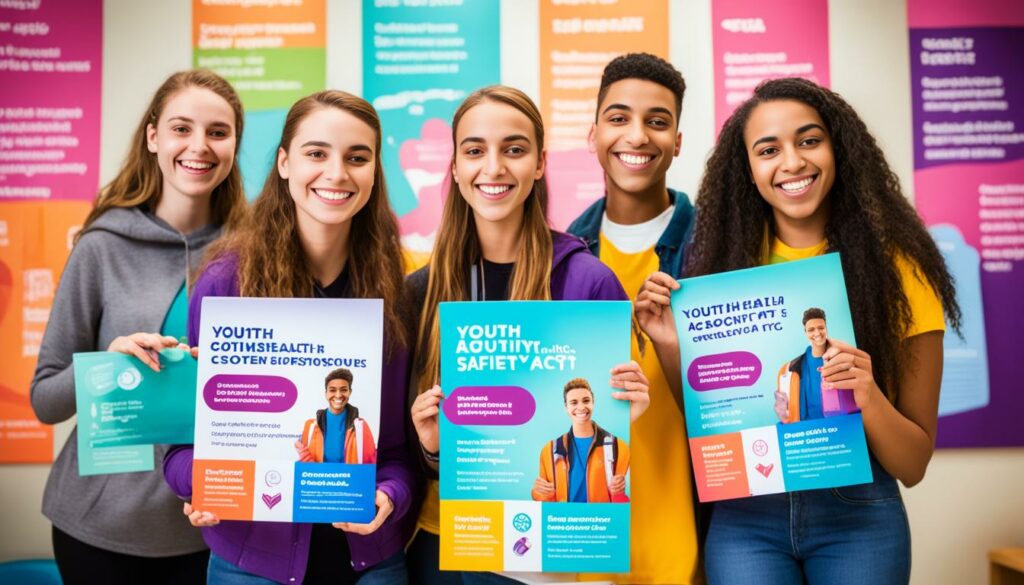
The Youth Health Equity + Safety Act (YHES Act) plays a vital role in improving the health outcomes of young individuals by focusing on youth access to contraception. This act aims to address the persistent sexually transmitted infection (STI) epidemic among California youth and ensure equitable access to reproductive healthcare services.
The YHES Act recognizes the significance of expanding access to internal and external condoms, as well as the HPV vaccine. By providing young individuals with the necessary resources, the act aims to empower them to make informed decisions about their sexual health and protect themselves from unintended pregnancies and STIs.
This act emphasizes the importance of comprehensive sexual and reproductive health education. It emphasizes that knowledge is power and that educating youth about contraception is crucial. By equipping young individuals with comprehensive knowledge, they can make responsible choices and prioritize their well-being.
This initiative is supported by various organizations, including Generation Up, Black Women for Wellness Action Project, Essential Access Health, and URGE. The YHES Act promotes equity in healthcare and strives to create a healthier future for all young individuals.
Benefits of Comprehensive Sexuality Education
Comprehensive sexuality education programs play a vital role in equipping teenagers with the knowledge and skills necessary for healthy sexual behavior. By providing comprehensive information on sexual health, contraception, and disease prevention, these programs empower teens to make informed decisions and reduce risky behaviors. With a focus on HIV/AIDS education and teen risk-taking behavior, comprehensive sexuality education programs address the unique challenges faced by adolescents in protecting their sexual health.
Studies have consistently shown that comprehensive sexuality education is more effective than abstinence-only programs in reducing risk-taking behavior among teens. By providing accurate and inclusive information, these programs enable young people to develop a comprehensive understanding of their sexual health and make responsible choices.
A key component of comprehensive sexuality education is education on condom use. Teens learn the importance of condom use as a method of both preventing unwanted pregnancies and reducing the risk of sexually transmitted infections, including HIV/AIDS. They are educated on the correct usage, storage, and disposal of condoms, ensuring that they have the necessary skills to protect themselves and their partners.
Comprehensive sexuality education programs also provide a safe space for open discussion about sexual health. This fosters a supportive environment where teens can ask questions, seek guidance, and address any concerns they may have. Having access to accurate and reliable information helps dispel myths and misconceptions, reducing the stigma surrounding sexual health topics.
Benefits of Comprehensive Sexuality Education:
- Reduces teen risk-taking behavior
- Provides accurate information on sexual health and contraception
- Promotes responsible decision-making
- Reduces stigma and misinformation
- Empowers teens to protect themselves from unwanted pregnancies and sexually transmitted infections
“Comprehensive sexuality education equips teenagers with the knowledge and skills necessary for healthy sexual behavior while reducing risk-taking behavior.” – Dr. Jane Peterson, Sexual Health Expert
Comparison of Comprehensive Sexuality Education and Abstinence-Only Programs
| Comprehensive Sexuality Education | Abstinence-Only Programs | |
|---|---|---|
| Educational Approach | Comprehensive and inclusive information on sexual health, contraception, and disease prevention. | Emphasis on abstinence as the only method of preventing unwanted pregnancies and sexually transmitted infections. |
| Effectiveness | More effective in reducing risk-taking behavior among teens. | Less effective in reducing risk-taking behavior among teens. |
| Empowerment | Equips teens with the knowledge and skills to make informed decisions. | May leave teens with limited information and uncertainties. |
Comprehensive sexuality education is a crucial component of ensuring the well-being of teenagers. By providing accurate information, addressing risk-taking behavior, and promoting responsible decision-making, these programs empower teens to navigate their sexual health with confidence. With its focus on HIV/AIDS education and reducing teen risk-taking behavior, comprehensive sexuality education plays a pivotal role in protecting the sexual health and future of young people.
Condom Availability Programs in the Public Schools
As part of a comprehensive approach to promoting sexual health, many schools have implemented condom availability programs. These programs aim to increase condom use among sexually active teens without encouraging more sexual activity. Research studies have shown that condom availability programs lead to a higher rate of condom use during intercourse, effectively protecting teens from unintended pregnancies and sexually transmitted diseases.
“Condom availability programs play a crucial role in equipping teens with the resources they need to engage in safe and responsible sexual behavior. By providing easy access to condoms in schools, we are empowering young people to protect themselves and make informed decisions about their sexual health.”
– Dr. Amanda Thompson, American College of Obstetricians and Gynecologists
These programs are supported by professional organizations like the American College of Obstetricians and Gynecologists, recognizing the importance of promoting sexual health among teenagers. By making condoms readily available in schools, educators and health professionals can ensure that students have access to the necessary resources for protecting themselves.
The Impact of Condom Availability Programs
Research has shown that condom availability programs have a positive impact on teen behavior and health outcomes. Here are some key findings:
| Impact | |
|---|---|
| Increased Condom Use | Condom availability programs significantly increase the rate of condom use during sexual intercourse among sexually active teens. |
| Reduced Unintended Pregnancies | By promoting condom use, these programs contribute to a decrease in unintended pregnancies among teenagers. |
| Prevention of STDs | Condom availability programs help reduce the transmission of sexually transmitted diseases, providing a vital line of defense against infections. |
| Promotion of Responsible Behavior | These programs reinforce the importance of responsible sexual behavior and educate teens about the risks associated with unprotected sex. |
By implementing condom availability programs in schools, we are taking proactive steps to ensure the well-being of our youth. These programs not only provide access to essential resources but also foster a culture of open communication and comprehensive sexual education.
Condom availability programs empower teens to make informed decisions about their sexual health, reducing the risks of unintended pregnancies and sexually transmitted infections. It is vital that these programs are supported and expanded to reach more schools and communities. Together, we can create a safe and supportive environment for our youth to navigate their sexual health journeys.
Conclusion
Ensuring that teens have access to secure contraceptives is essential for their sexual health and overall well-being. The ability for teenagers to obtain condoms legally and easily is a vital step in promoting responsible sexual behavior.
Teens can purchase condoms at various locations such as drugstores, community health centers, supermarkets, and convenience stores. They can also access free or low-cost condoms from contraception and health clinics, doctors, and college health offices. Additionally, online platforms provide a discreet option for teens to purchase condoms.
However, access to contraceptives is not enough. Equipping young people with comprehensive sexual health education is equally important. By providing youth with accurate information about contraception options and safe sexual practices, we empower them to make informed decisions and protect themselves from unintended pregnancies and sexually transmitted infections.
To improve youth access to sexual health resources, it is crucial for communities, educators, and healthcare providers to work together. By ensuring the availability of contraceptives and promoting comprehensive sexuality education, we can support teenagers in making responsible choices and prioritize their overall well-being.
FAQ
Can teens buy condoms?
Yes, teens can legally buy condoms at any age.
Where can teens buy condoms?
Teens can buy condoms at drugstores, community health centers, supermarkets, convenience stores, and online. Some college campuses also have vending machines that offer condoms.
What are some tips for buying condoms?
Helpful tips for buying condoms include buying them before they are needed, checking expiration dates, knowing size and material preferences, being aware of latex allergies, and understanding that buying condoms is responsible and normal.
Can teens get condoms for free?
Yes, many contraception and health clinics, doctors, and college/university health offices offer free or low-cost condoms. Online resources like condomfinder.org can help teens find the nearest place to obtain free or reduced-cost condoms.
Can teens buy condoms online?
Yes, there are several reputable websites where teens can purchase condoms at a reduced price and have them delivered in a discreet package. Popular choices include Amazon, Condom Depot, and RipNRoll.
How many condoms do teens need?
It is recommended for teens to have at least three to six condoms on hand for each sexual experience to account for multiple rounds of sex, mishaps, or the need for extras.
What other contraception options are available for teens?
Teens have other contraception options, including contraceptive sponges, diaphragms or cervical caps, female condoms, fertility awareness-based contraception, spermicides, birth control pills, IUDs, hormonal implants, injections, and patches. Consulting with a healthcare professional is advised.
What is the Youth Health Equity + Safety Act (YHES Act)?
The YHES Act supports youth health and well-being by expanding access to internal and external condoms, as well as the HPV vaccine. It aims to ensure equitable access to contraception and comprehensive sexual and reproductive health education for teens.
What are the benefits of comprehensive sexuality education?
Comprehensive sexuality education provides information on sexual health, contraception, disease prevention, and the correct use of condoms. It is more effective than abstinence-only programs in reducing risk-taking behavior among teens.
Are there condom availability programs in public schools?
Yes, some schools have implemented condom availability programs as part of their comprehensive approach to promoting sexual health. These programs increase condom use without increasing rates of sexual activity and have positive outcomes in protecting teens from unintended pregnancies and STDs.
Why is it important to ensure youth access to contraception?
Ensuring youth access to contraception is crucial for their sexual health and well-being. It empowers teens to make responsible choices, protect themselves from unintended pregnancies and sexually transmitted infections, and promotes overall youth health equity.
Source Links
- https://www.healthline.com/health/how-old-do-you-have-to-be-to-buy-condoms
- https://www.essentialaccess.org/about/press-room/youth-health-equity-safety-yhes-act-introduced-require-free-condoms-ca-high
- https://www.aclu.org/documents/protecting-teen-health-comprehensive-sexuality-education-and-condom-availability-programs

